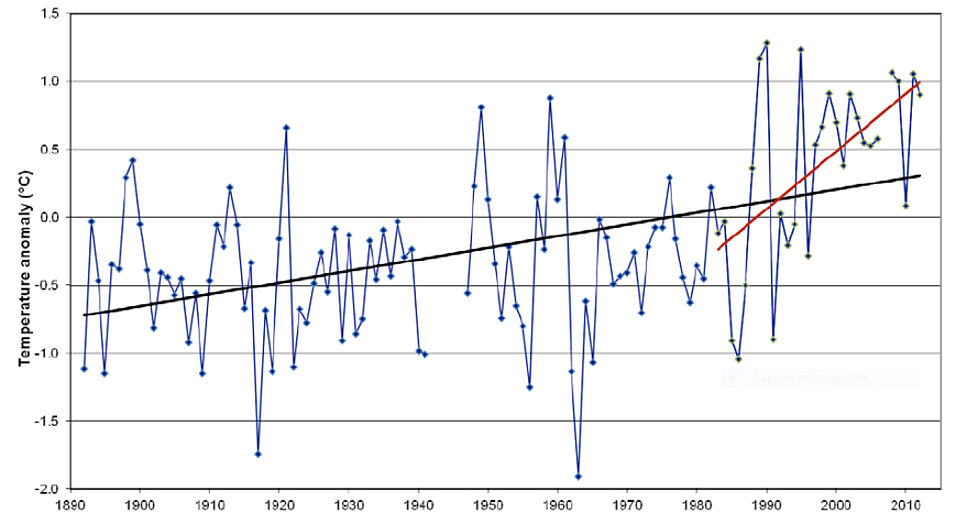MSc Student
Unit for Theoretical Biology, Department of Evolutionary Biology
University of Vienna
The Atlantic herring, Clupea harengus, undertakes long migrations to spawning and to feeding grounds and is adapted to sustained, steady swimming over long distances. Since the Industrial Revolution in the 19th century the North and Baltic Seas have been undergone partly dramatic changes by anthropogenic activities. A distinct shift in these ecosystems was observed in the 1980s related to a rapid increase of water temperature (see figure). I am comparing herring populations distinctly prior (19th and early 20th century) and later to this event and am interested if there are long-term changes in morphological traits related to swimming and feeding in the Atlantic herring.


